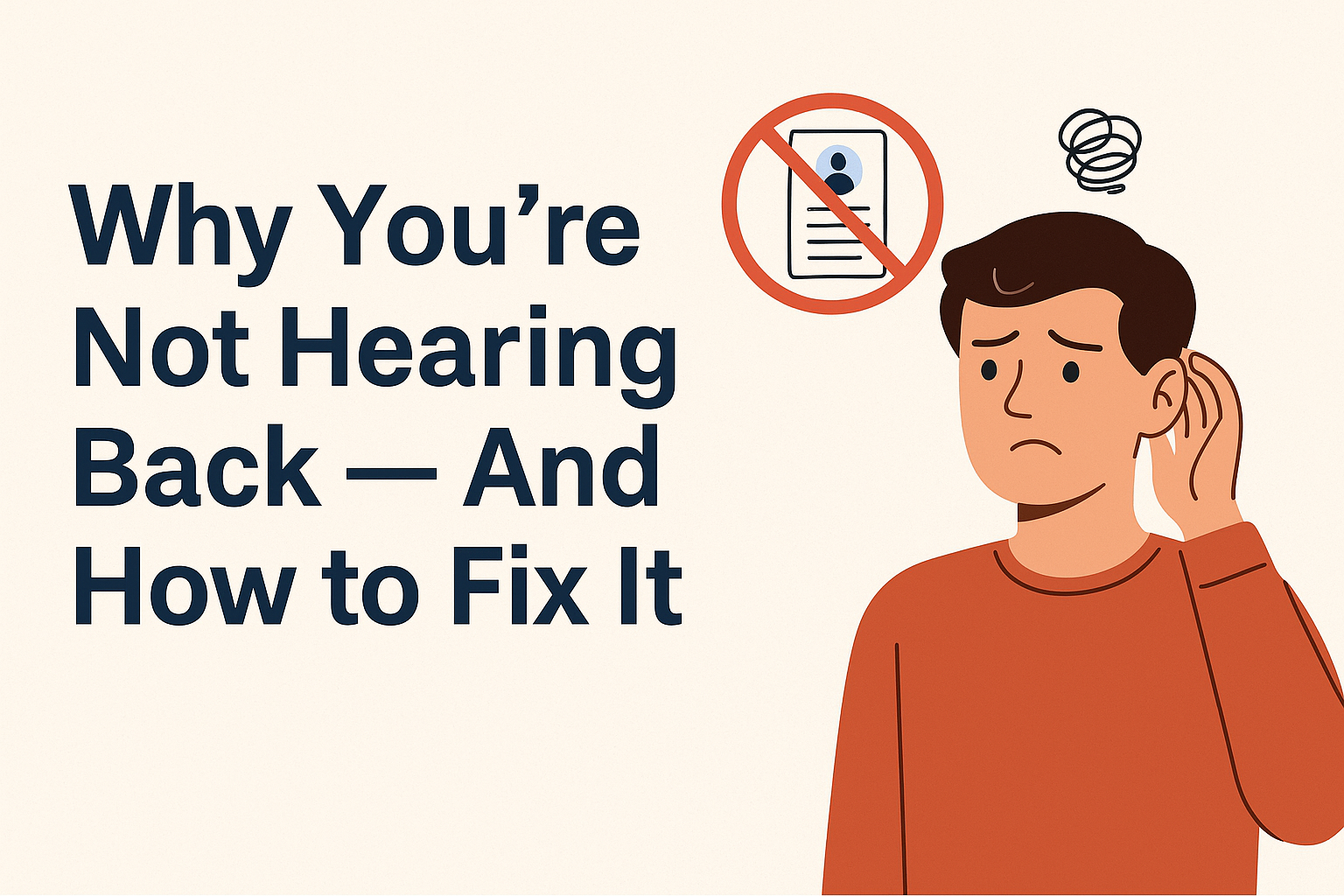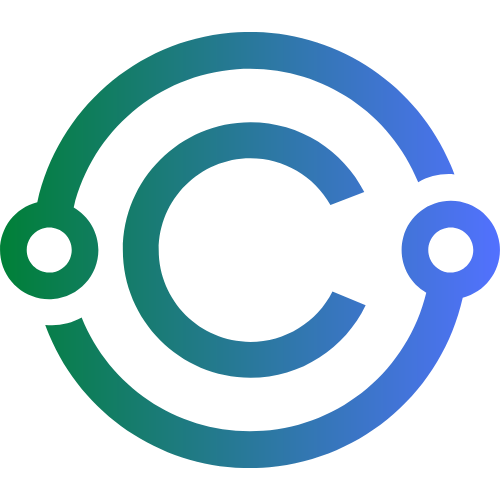Why You're Not Hearing Back — And How to Fix It

You found the perfect job listing, tailored your resume, clicked ‘Apply’—and then…nothing. Days turn into weeks, and your inbox remains painfully quiet.
If this sounds familiar, you’re not alone. A 2024 CareerBuilder study revealed that 74% of job seekers never hear back from employers. The problem isn’t always your qualifications—it’s often how you present yourself, how you apply, and what happens after you click submit.
This guide dives into the top reasons candidates don’t hear back—and exactly how to fix them so your applications get noticed, interviews booked, and doors opened.
1. Your Resume Isn’t Optimized for Applicant Tracking Systems (ATS)
The problem: 90% of companies use ATS software to scan resumes before a human ever sees them. If your resume doesn’t include the right keywords or uses overly complex formatting, it could get filtered out.
Fix it:
- Use simple formatting (no tables or graphics)
- Tailor your resume to each job description
- Use the exact language used in the posting
Tool: Jobscan Resume Analyzer
2. You’re Applying Too Broadly or Too Randomly
The problem: Applying to every job you see makes you look unfocused—and results in generic applications.
Fix it:
- Apply only to jobs where you meet 70–80% of the requirements
- Customize your resume and cover letter every time
- Keep a tracker (e.g., in Notion or Teal) to stay organized and intentional
3. Your LinkedIn Profile Doesn’t Match Your Resume
The problem: Recruiters often check your LinkedIn first. If it’s outdated or misaligned, it raises red flags.
Fix it:
- Make sure your title, experience, and skills match your resume
- Add a professional photo and compelling headline
- Turn on “Open to Work” for recruiters (privately if you prefer)
Resource: How to Use LinkedIn to Find Hidden Job Opportunities
4. You Didn’t Follow Up
The problem: Candidates often assume silence means rejection, but sometimes hiring teams are just slow—or disorganized.
Fix it:
- Follow up within 5–7 days of applying (or after the interview)
- Keep your message short, polite, and specific
Template:
“Hi [Name], I hope you're doing well. I recently applied for the [Role] at [Company] and wanted to express my continued interest. Please let me know if any additional information would be helpful.”
More help: Follow-Up Emails That Get You Hired
5. Your Cover Letter Isn’t Adding Value
The problem: A generic or redundant cover letter can actually hurt more than help.
Fix it:
- Tell a story, not a summary of your resume
- Highlight your motivation and culture fit
- Show you’ve researched the company
Resource: Cover Letter Hacks: What to Say (and What to Skip)
6. You’re Ignoring the Hidden Job Market
The problem: Many roles are filled through referrals or internal connections before they’re ever posted.
Fix it:
- Build relationships with hiring managers, recruiters, and industry peers
- Engage on LinkedIn, attend virtual meetups, and ask for referrals
Case study: Aamir landed a UX job by commenting on LinkedIn posts and messaging a hiring manager before the role went live. Read full case study
7. You’re Not Framing Your Experience Well
The problem: You may have the skills—but your resume doesn’t highlight them in a way that’s relevant or measurable.
Fix it:
- Use the STAR method for experience bullets (Situation, Task, Action, Result)
- Quantify impact wherever possible: “Increased sales by 20%,” “Cut onboarding time by 30%”
Example:
Instead of: “Managed customer emails”
Say: “Resolved 50+ support tickets weekly with 95% satisfaction rating”
More help: The STAR Method: Ace Every Behavioral Interview Question
8. You’re Only Applying Through Job Boards
The problem: Relying solely on job boards is like fishing in a crowded pond. The best roles may not even be listed—or have hundreds of applicants.
Fix it:
- Use company websites, alumni networks, Slack groups, and cold outreach
- Apply early—ideally within 48 hours of a job posting
Tool: Otta (curated startup roles)
9. Your Application Has Typos or Weak Formatting
The problem: Even minor errors can signal carelessness.
Fix it:
- Use tools like Grammarly or Hemingway Editor
- Ask a friend or mentor to review before submitting
- Keep fonts simple (Arial, Calibri) and size readable (11–12pt)
10. You Haven’t Built a Personal Brand or Portfolio
The problem: In many fields (tech, design, marketing, etc.), resumes aren’t enough.
Fix it:
- Build a simple portfolio or personal site with Carrd or Notion
- Share your expertise on LinkedIn posts once a week
- Highlight side projects or volunteer work
Example:
A junior developer wrote about their learning journey on LinkedIn and got recruited by a startup CEO who resonated with their story.
Real Case Study: How Misha Went from 0 Responses to 3 Offers
Background: Misha, a recent grad from Canada, applied to 70 jobs in two months and got only one interview.
What changed:
- She rewrote her resume using Jobscan to match the job descriptions
- She created a Notion portfolio of her class projects and volunteer work
- She reached out to 20 people in her field for advice and referrals
- She followed up after every interview
Result: Within 30 days, she had three final-round interviews and two job offers.
Takeaway: Strategy and consistency beat volume.
Final Thoughts: No Response Doesn’t Mean No Future
If you’re not hearing back, it doesn’t mean you’re unqualified—it often means your application isn’t showing your value clearly or reaching the right eyes.
Be strategic. Be proactive. Be persistent.
And most importantly—don’t take silence personally. Every application teaches you something. Keep refining, and the right response will come.

